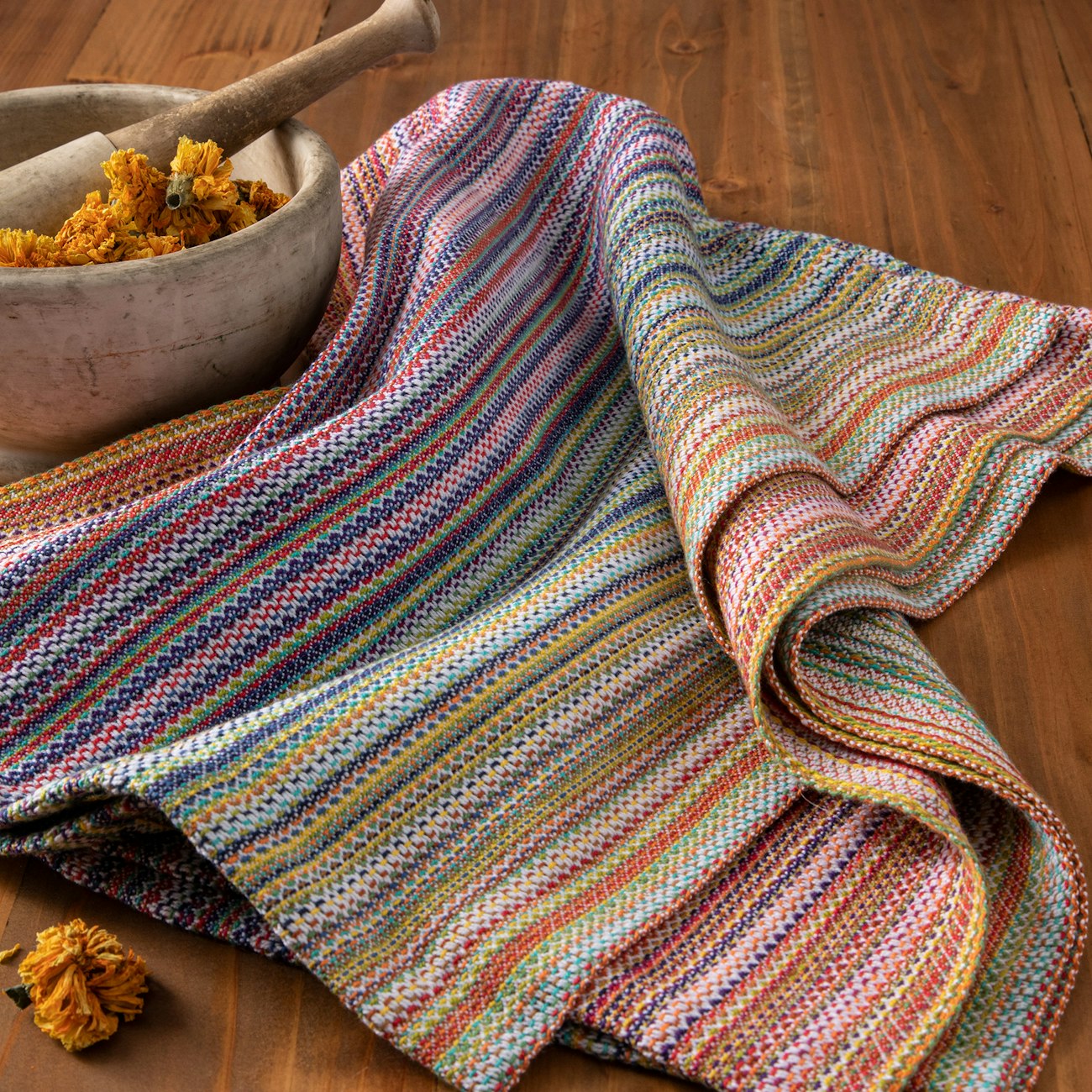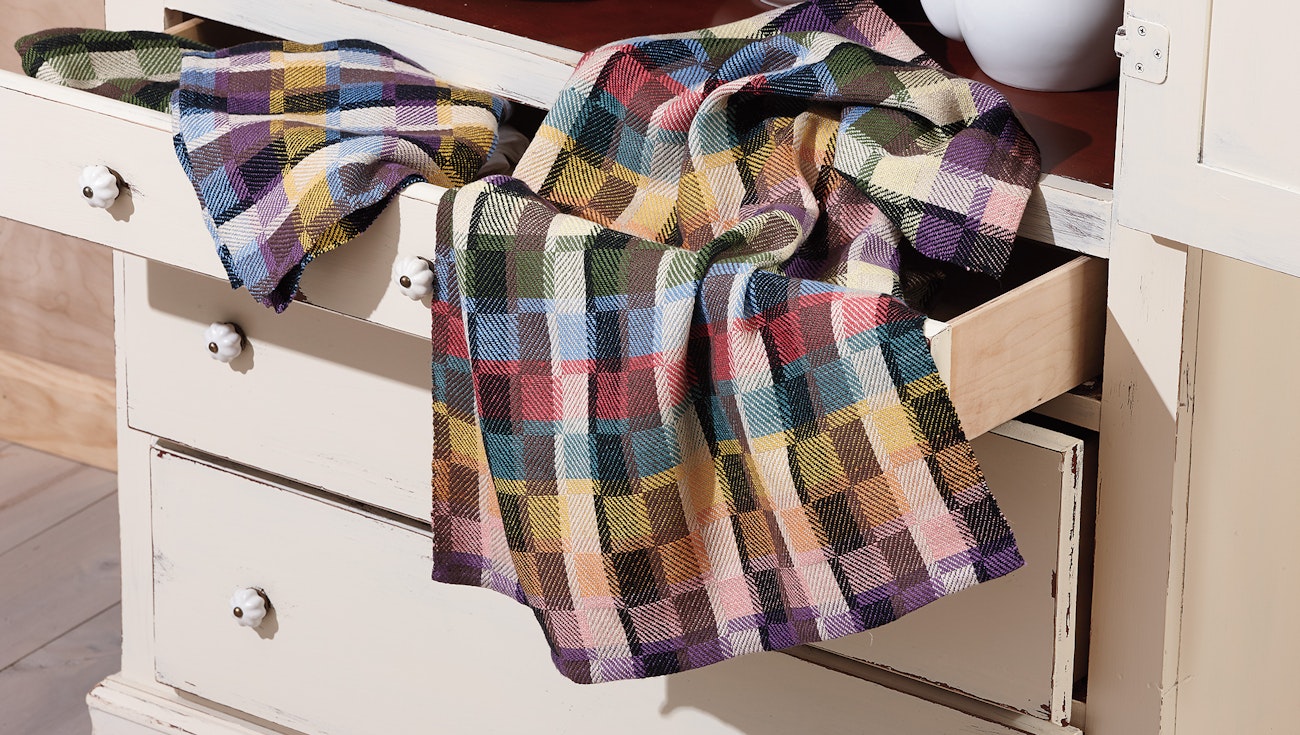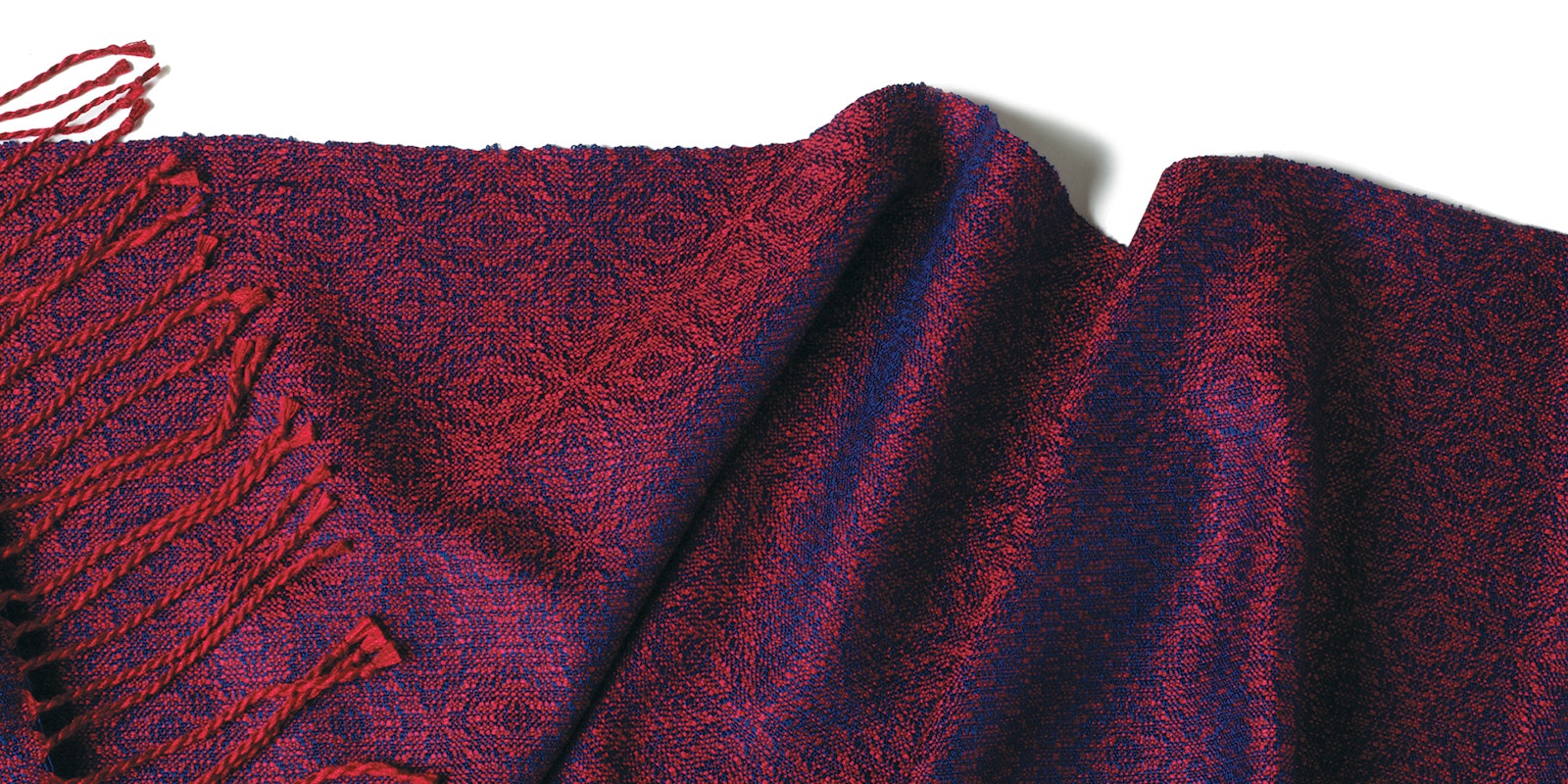As we are currently putting the finishing touches on our May/June 2022 issue which will be a lot about twills, I thought some twill education was in order. I searched the Handwoven indexes and sure enough, found a twill glossary in our March/April 2001 issue. Just for fun, I grabbed a few photos from past Handwovens that illustrate some of the twill types and plugged them in. I see some gaps in this list at least in the way that we talk about twills today, 21 years after this was published, do you? For me a twill is not a threading, treadling, or tie-up but the fabric and the weave structure created from those components. Many weavers, myself included use the terms as shorthand to describe a draft but there is a risk of confusion when we do so. — Susan
TWILL GLOSSARY
ADVANCING TWILL Threadings (and/or treadlings) in which twill runs (sections of straight or point twills) of two or more ends begin on one shaft (or more) above (or below) the beginning shaft of the previous run (a 4-thread run with an advance of one shaft is 1-2-3-4; 2-3-4-5l 3-4-5-6, etc). (See the header above.)
BROKEN TWILL Twill threading or treadling orders that skip one or more shafts and/or one or more treadles at reversing points, breaking the twill diagonals.
EXTENDED POINT TWILL Threadings (and/or treadlings) that progress through all the shafts (and/or treadles) more than once before reversing.
FANCY (OR IRREGULAR) TWILLS Drafts with regular twill threading and/or treadling orders that do not have tie-ups that can be expressed as a twill ratio.
NETWORKED DRAFTED TWILL Threading and treadling orders that are drafted on a network that uses a predetermined base. In the most common twill threading network, the first of each group of four warp threads must be threaded on either shaft 1, 5, 9, or 13 (the first shaft in any group of four), the second thread on 2, 6, 10, or 14 (the second shaft in a group of four), etc.

Kathie Roig's Random Exchange Towels in Handwoven September/October 2021 were threaded as M and W points and treadled using only four treadles instead of the more typical eight that are used for an 8-shaft twill.
POINT TWILL Threading and/or treadling orders that begin on the first shaft (or treadle) available and progress through the shafts (or treadles) to the last and then reverse and return to the first. If a twill is both threaded and treadled in a point, cross ("x") or diamond motifs are formed. A point threading order using a straight twill treadling order produces a horizontal zigzag design; a straight threading order using a point twill treadling order produces a vertical zigzag design.
REPEAT TWILL Pairs of shafts are repeated in the threading: 1-2-1-2 and 2-3-2-3, etc., as in overshot, for example. This is usually an inaccurate label, since almost all structures that use repeat threadings are not twills.
REVERSE TWILL Another name for turned twill since a warp-emphasis (i.e., 3/1) twill appears on the reverse side of a weft-emphasis (i.e., 1/3) twill and vice versa.

Yoriko Oki and Vicki Robinson's "Test Drive" Twill Towels from Handwoven November/December 2013, are a gorgeous example of turned twill. Photo by Joe Coca
TURNED TWILL Warp-emphasis vs weft-emphasis twills that create blocks of pattern; one twill appears as pattern, the other as background; also called twill blocks, twill diaper, counterchanged twill, reverse twill, and twill damask.
TWILL A weave in which each weft pick passes over or under more than one warp end in the interlacement sequence (and each warp end over or under more than one weft pick). In each successive pick, the same interlacement begins on an adjacent warp end, either to the left or to the right of the previous pick, creating the diagonal line characteristic of twill.
TWILL DAMASK Also used for turned twill; especially for turned broken twill.
TWILL BLOCKS A name for turned twills.
Posted March 28, 2022 Revised May 20, 2022

